Welcome to the third and final entry in our Staff Picks series, in which we count down our favorite anime, manga, and video games of the past year. This time we’re talking about anime, and what a year it’s been for Japanese animation! 2017 saw the US release of a number of highly anticipated anime films, including the worldwide smash hit your name. (now slated for a Hollywood remake). On the business side, Netflix and Amazon leaned in hard on anime streaming rights, picking up multiple popular exclusives and frustrating the efforts of established players like Crunchyroll and FUNimation. The biggest results of those investments had to wait until 2018 to manifest, with Netflix releasing Devilman Crybaby to wide acclaim just as Amazon shut down their Anime Strike service. Despite the fracturing of the streaming market, fans found a lot to love, even within the typically maligned medium of 3-D animation. Anime is evolving fast thanks to a mix of technological advancements, the decline of the domestic home video market, and increased overseas attention, and 2017’s unlikely success stories point to an exciting future for the medium.
And with that, enjoy the list of our favorite anime of 2017!
David Estrella

#3: Fate/Stay Night: Heaven’s Feel Part 1
Fate/Stay Night: Heaven’s Feel has carried the ignominy of being “unadaptable” for so long that I started to believe it. The route in the original visual novel is a long, meandering read. Half of it is spent in the kitchen cooking dinner; the other half of it is sweaty, relentless banging in the bedroom. Plot happens at the end but not after hours of Kinoko Nasu failing to get to the point.
FSN readers generally believe “Unlimited Blade Works” is the best route in the game and have aligned their issues with the writing in “Heaven’s Feel” to place the blame on Sakura, a purple-haired childhood friend trope with a whisper-soft voice and little agency in the hot-blooded shonen manga battles of the Holy Grail War. Leave it to Ufotable to adapt the first part of the “Heaven’s Feel” theatrical trilogy as a superpowered slasher film in which legendary heroes go down like hormonal teens at summer camp. It’s a gorgeous, moody film that evokes the spirit of Garden of Sinners, another Ufotable joint that is somehow 10 years old now. The vision here is greater than simply adapting text-to-screen, it’s all about making a good film, leaning into the strengths of the Fate franchise while respectfully cutting the fat from the source material. Hopefully the remaining films can match or surpass this excellent beginning.
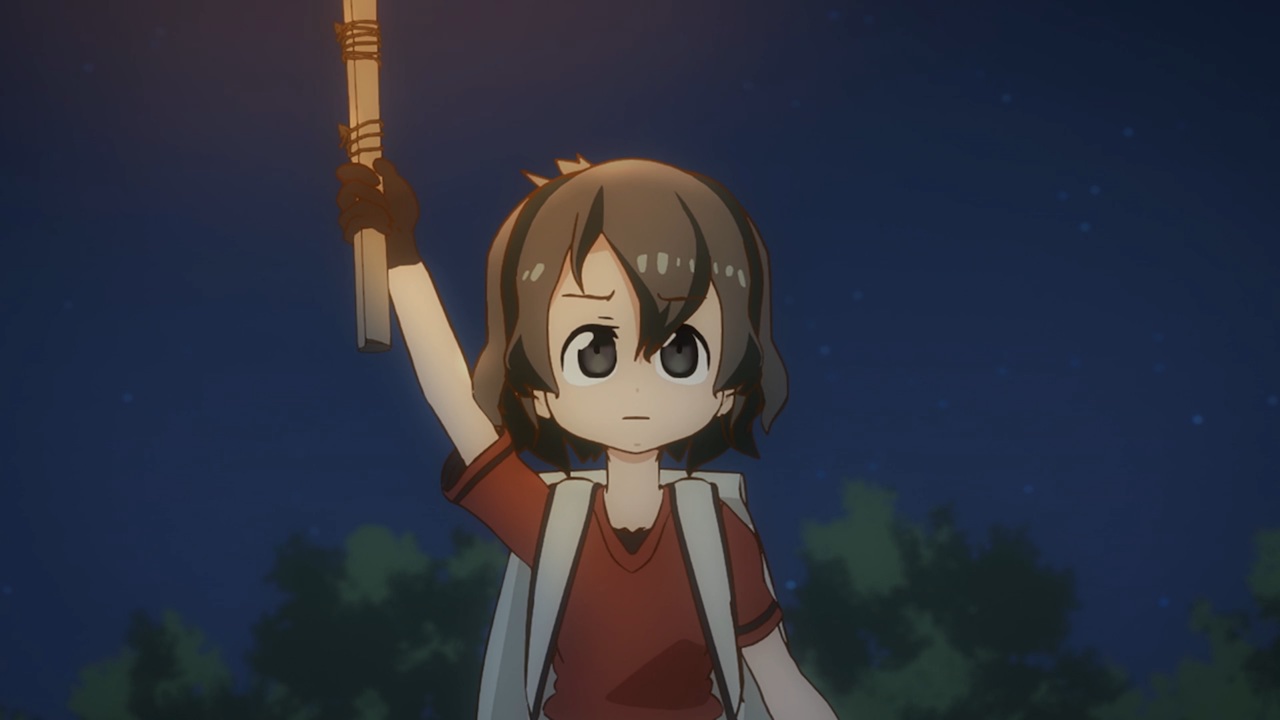
#2: Kemono Friends
Take a second to forget about the Kadokawa drama and search for that moment in time when Kemono Friends took the world by storm. Crystallize it and hold it dear. Kemono Friends should not have, could not have existed in a world such as this. Media giants are poised to consume one another and stamp out all the good in the world. It has always been this way. Somehow, Kemono Friends was broadcast on TV Tokyo. By the last episode, hundreds of thousands of viewers were in an animalistic fervor for this show. Anime fans have never beheld a work as pure, joyous, and heartfelt as Kemono Friends. It came from nowhere, from nothing, and it became everything for us. It gave me the power to slug through my day-to-day as I followed it.
“I have to live. I have to watch Kemono Friends.”
Kaban-chan, Serval-chan, all the Friends we met on the way. With their help, I rediscovered some ephemeral, nameless thing in creative work. Something compels us to create. Sometimes it goes away, sometimes it comes back, sometimes it goes away again and it doesn’t come back for months. Writing these blogs, writing in general takes time, effort, energy, and an iota of love for my own craft, just an iota to write it even with the shrill voice in my head telling me that no one reads these things and that it’s not worth the effort.
Kemono Friends was a dead smartphone application before the anime adaptation became a cultural phenomenon. Technically, that means there are more people reading the Ani-Gamers blog, specifically my writing, than there are people in the whole world playing the Kemono Friends mobile game. I’ll write my damn blog because of this truth.

#1: Kizumonogatari Part 3
What more do you want me to say?
“This is the best possible Kizu animation we could have gotten, and we are all immensely blessed to have lived long enough to see it.”
I might be wrong, but I think myself to be a reasonable person. Reasonably, I can be allowed one or two things to be irrationally passionate about. If you know me personally, if after all this time you have not seen the Kizumonogatari trilogy despite my having spent a lifetime online gushing about it, we can’t be good friends. I’m drawing the line in the sand here. We can be friends, just not good friends. You cannot call yourself a good friend of mine if you haven’t seen Kizumonogatari. Between us, there will be a distance, a permanent, unresolvable distance that cannot be bridged by any act of kindness or gesture of goodwill, except for watching Kizumonogatari. Having friends that aren’t good friends is good, actually. People you only feel 6/10 happy to see is still a positive. It’s a low-energy positive that doesn’t require a lot of effort to maintain.
So I’m Definitely Not Mad about people being really into garbage media like 2-D idols and F2P shooters over Kizumonogatari and the Monogatari Series. Kizumonogatari is great, it’s for me alone, and I will share it with no one.
Ink

#3: The Eccentric Family 2
You know what Two Car: Racing Sidecar fell short on? Mascots. The sheer show-don’t-tell conversion of novel-based dialog to facial reactions and sets in the second installment of The Eccentric Family builds upon the competency in the first adaptation with an emboldened sense of maturity. (In reality, I just love boy-meets-girl stories.) These are characters that have become very dear to my heart, and seeing them grow (no matter how) is an honor. I feel somewhat uneasy naming a sequel as an “of the Year” pick, but the degree to which this season of this anime amps up the previous season’s ambitions is as noticeable as it is enjoyable.
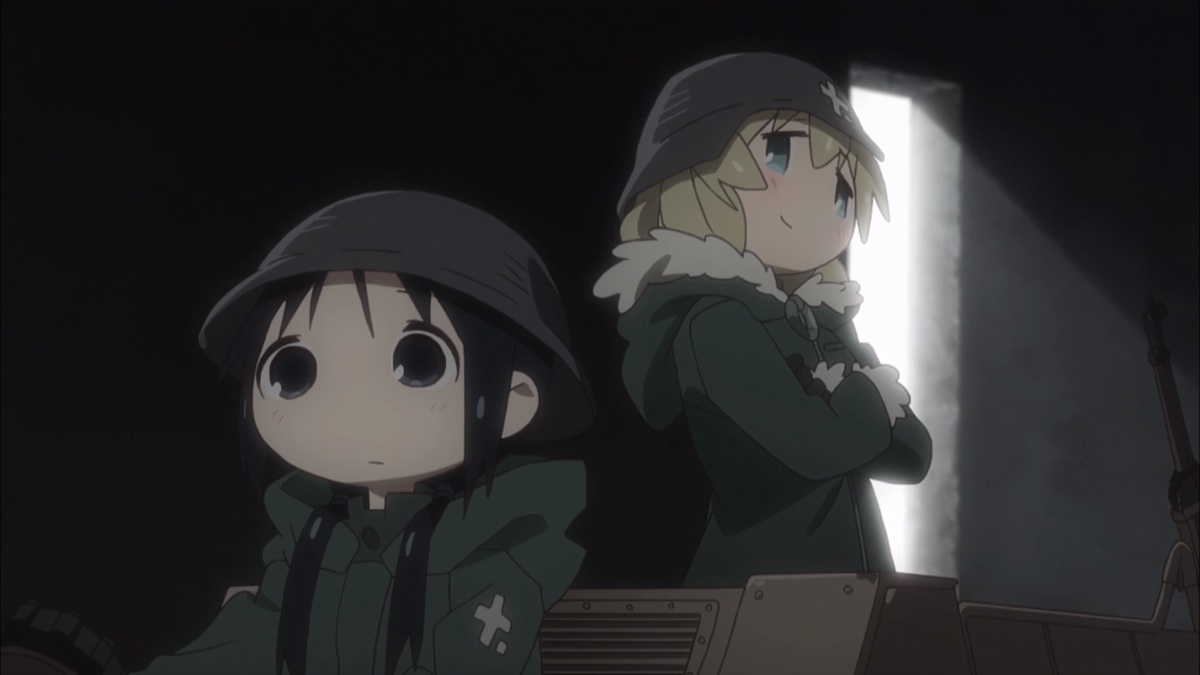
#2: Girls’ Last Tour
Even in the season of a revived and re-envisioned Kino’s Journey, Girls’ Last Tour feels like the spiritual successor to the original Kino’s. Light on the surface but ponderous beneath, Girls’ Last Tour is charming and engrossing. It feels like a puzzle-platformer video game but develops worlds of wonder from the exploration of desolate areas of a post-apocalyptic world. The youths balance each other out via their unbalanced blends of optimism and pessimism, and this odd couple formula, mixed with the contrast of cute girls doing cute things against the setting, creates something truly special. The only flaws in the series are that it does not take place on the Isle of Man and that it only has enough protagonists for a single kneeler team.

#1: your name.
If Two Car: Racing Sidecar involved every pair of racers switching souls with one another and then again with the racers on other teams, it would only be a slightly lesser masterpiece compared to Makoto Shinkai’s body-swapping epic your name. I love this movie on multiple levels. Any movie that necessitates a second watch is worth valuing above the average anime. Shinkai accomplished something truly spectacular in terms of storytelling: he made the world weep and laugh together during a theatrical release that crept across the globe against all odds (I mean, c’mon … it’s anime) like a fulfilled Wyld Stallyns prophesy. But I’d be lying if I said this was his best work as a director. (Garden of Words forever!) Even so, your name. is a tour de force in that it made a non-Ghibli anime, featuring multiple instances of adolescent boob fondling, palatable and beloved to a worldwide audience.
Evan Minto
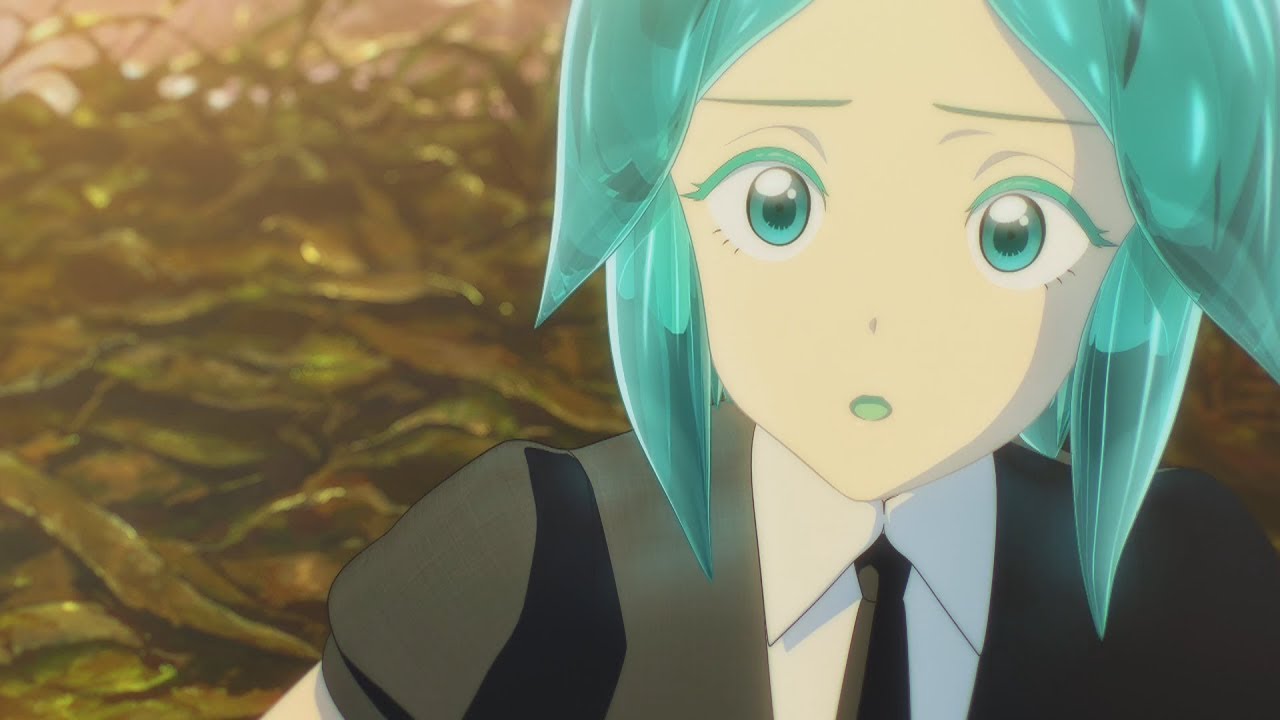
#3: Land of the Lustrous
I already wrote up the Land of the Lustrous manga for my manga Staff Picks, but it’s doing double duty this year so here I go again! Studio Orange’s anime adaptation retains most of the appeal of the original series, with atmospheric environments, surreal effects, and a meandering story that has a surprising amount to say despite not really coalescing into a single focused narrative. But the true achievement of the anime version of Lustrous is its CG animation, which blows away its contemporaries. Featuring translucent materials, copious simulation effects, dynamic virtual camera work, and expressive acting backed by both keyframe animation and motion capture, Lustrous is a new breed of CG anime that captures the appeal of traditional animation while taking full advantage of digital tools. The deft mixing of 2-D and 3-D animation in some scenes has been discussed at length and is indeed worth highlighting, but as a fan of CG animation who has been consistently disappointed by its use in anime, I want to believe that Land of the Lustrous represents the beginning of a CG renaissance, not just deference to the old ways of hand-drawn anime.

#2: Little Witch Academia
Little Witch Academia’s move to TV brings with it a few downsides: less ambitious animation and background art, simplified character designs, and a story stretched a tad too thin. But despite it all, the strong cast and unique brand of family-friendly magical adventure means it still maintains much of its original charm. Akko, the excitable and untalented young heroine, is just as stupid and lovable as ever (in fact, she might be even stupider this time around) as she joins Luna Nova Academy and works toward her dream of being a great witch. The series excels at episodic comedy vignettes, but it also tries out, with mixed results, a darker direction via both the backstory of Akko’s role model, Shiny Chariot, and the introduction of a direct antagonist. There’s also more time spent with her classmates, including two standout episodes focusing on her two sidekicks: a literal look inside the head of the morose and sarcastic Sucy and a visit to the family home of the timid bookworm Lotte. The world around them still has the whimsical design sensibility that made the originals so unique, with ornate architecture and mechanical design that showcases a magical world whose ancient origins collide with modern technology. And then there’s the staff at Studio Trigger, who have clearly fallen in love with this series. They delight in bringing its characters, creatures, and machines to life on screen with springy animation recalling the glory days of their time at Gainax. Little Witch Academia’s TV series is sometimes inconsistent, but when the stars align it makes for absolutely delightful viewing.
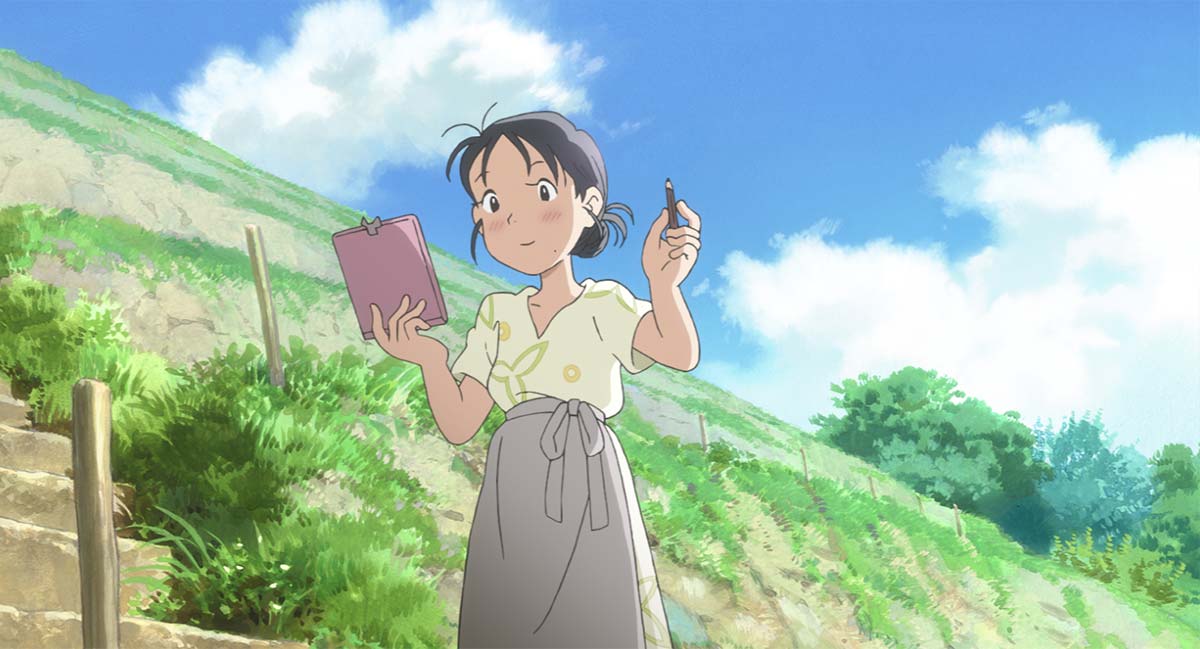
#1: In This Corner of the World
A mini-phenomenon in Japan when it came out in 2016, In This Corner of the World chronicles the everyday struggles of a young married woman in the shipbuilding town of Kure, near Hiroshima, during World War II. Based on the original work by Hiroshima native and manga artist Fumiyo Kouno (Town of Evening Calm, Country of Cherry Blossoms) and directed by Sunao Katabuchi (Mai Mai Miracle), In This Corner is a film with genuine heart and an unprecedented sense of historical verisimilitude thanks to the absurdly detailed research the filmmakers undertook during pre-production. It’s a WWII movie, so there’s a heavy dose of tragedy, but also love, laughter, and beauty. What makes it the year’s best anime is the way that these contradictory emotions inform and accentuate each other. The effect is a story that’s layered and thought-provoking, surpassing even Ghibli’s masterpiece Grave of the Fireflies. By mixing comedy and drama, In This Corner builds a richer view of the psychological and moral contradictions of war, and leaves its audience with a profound understanding of the sacrifices made by civilians under siege. The film is essential viewing, not just because it captures the reality of war in 1945, but because it can inform our understanding of war today.
Alex Osborn
2017 delivered a healthy assortment of both quality TV series and unforgettable feature-length films. I’ve already put together a video rundown of my top 5 anime series of the year, so I’m sticking strictly to movies for these picks.

#3: A Silent Voice
Tamako Market and K-On! director Naoko Yamada crafted an emotionally gripping and visually astounding coming-of-age film that will stick with me for a very long time. A Silent Voice addresses bullying, disability, and depression with a level of care and authenticity rarely seen in the medium. Shoya Ishida’s transformation from an indifferent, thrill-seeking brat into a broken, lonely, and suicidal teenager is harrowing, and sets the stage for what is ultimately a cathartic tale of one’s desperate journey to find genuine friendship and redemption.
The animation is expressive and fluid, the painterly backgrounds are stunning, and the character designs are diverse but maintain a visual coherency. While the inclusion of The Who’s “My Generation” during film’s opening didn’t really work for me, Kensuke Ushio’s restrained, yet deeply affecting score marries beautifully with the themes and overall tone of A Silent Voice.
I must say I’m glad I decided to dive into Yoshitoki Ōima’s manga after having watched the movie, as the film’s lack of development for the secondary characters would have been far more glaring had I already been familiar with the source material. Still, given the constraints of a 130-minute film, Yamada delivers an admirable adaptation that has me eager to see what she does next.

#2: In This Corner of the World
Grave of the Fireflies holds a special place in my heart as one of the finest World War II dramas of all time. I honestly never thought Studio Ghibli’s animated masterpiece would ever be topped. Then I watched In This Corner of the World. Set in WWII Japan, director Sunao Katabuchi’s astounding war drama provides an admirably accurate depiction of Hiroshima before and after the devastating effects of the atomic bomb.
Ani-Gamers editor-in-chief Evan Minto called the studio MAPPA production a “masterpiece war anime,” and I couldn’t agree more. He spoke with the film’s producer, Masao Maruyama, about the incredible amount of work that went into recreating the experience of WWII, and their monumental effort really shows.
The carefully-researched production depicts life during WWII through the perspective of a young woman named Suzu, and expertly weaves moments of endearing comedy into what is ultimately a heart-wrenching drama. Despite the unnerving tragedies Suzu faces, her story is ultimately one of hope. In This Corner of the World delivers a conclusion that, for me, puts the film ahead of Grave of the Fireflies as the greatest animated WWII drama of all time. MAPPA created a breathtaking adaptation of Fumiyo Kōno’s manga, with distinct and beautiful character designs by Hidenori Matsubara, and music by Kotringo that seamlessly shifts from solemn to uplifting, rounding out what is a near-flawless production.
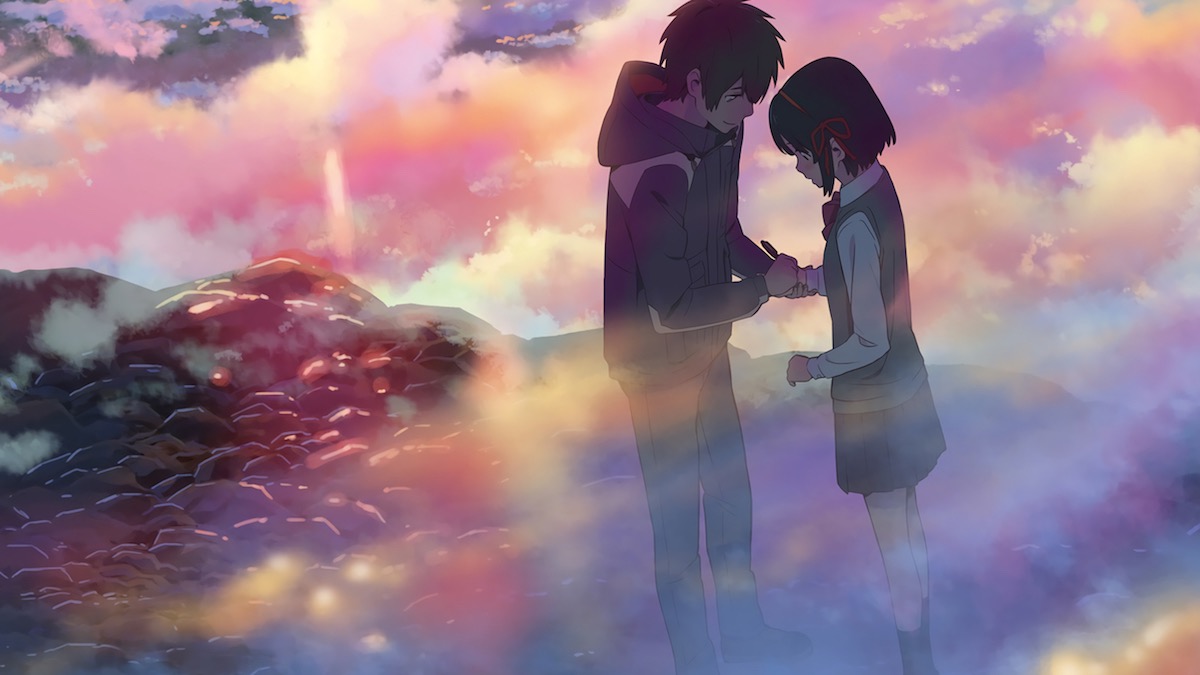
#1: your name.
I missed the opportunity to see your name. when it debuted at Anime Expo 2016, so I had to wait for its theatrical debut in the US the following year. In that time, the mounting critical praise and commercial success it received in Japan elevated my excitement to ridiculous heights. When I finally got my ticket for a matinee showing in April, I entered the cinema with near unattainable expectations, and somehow the film managed to not only meet those expectations, but exceed them, leaving me a satisfied, albeit blubbering mess by the time the credits rolled.
your name. is the culmination of director Makoto Shinkai’s career up to this point, fully realizing the “lovers separated by distance” premise that’s served as the focal point of nearly all of his prior works. In addition to being his most technically polished production, your name. integrates the best elements found in his prior works, yielding one of the most emotionally gripping romance anime I’ve ever seen.
I love how it takes the well-worn “body swapping” trope and subverts expectations, using it as a springboard to tell what is a deceptively-profound and thought-provoking love story that also has something to say about spirituality and the devastating effects of natural disasters. The leads are instantly endearing, the comedy is almost always on point, and the lovingly-crafted backgrounds, as expected from a Shinkai film, are a marvel to behold. The soundtrack, composed by Radwimps, is my favorite of the past few years, and on top of that, one of my favorite artists, Masayoshi Tanaka, did the character designs. your name. is basically the perfect blend of everything I love.
For more 2017 Staff Picks, check out our manga list and video game list!
